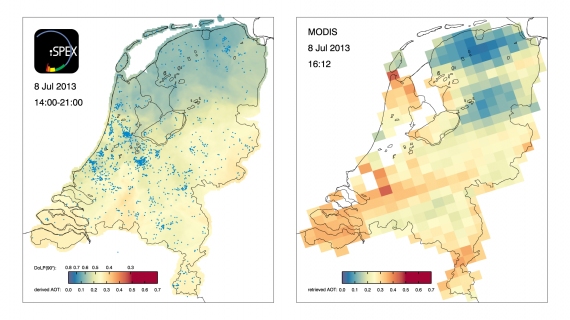Citizen scientists around the world contribute to all kinds of research projects. here at CosmoQuest, you are mapping the surfaces of the Moon, Vesta, and Mercury. Some projects, however, explore a little closer to home, our own planet Earth. These observations are becoming more and more important for tracking species, climate change, water quality, and other environmental concerns in a variety of locations. Your own backyard might be a hotspot for scientific activity!
That was the case for citizen scientists in the Netherlands who signed up to be part of a study of atmospheric dust in 2013, iSPEX. Each participants received an inexpensive add-on for their smartphone and collected data by taking pictures with this device and their phone camera during 3 cloudless days. Scientists at the University of Leiden analyzed the images to make maps of the atmospheric optical transparency (AOT) for each day in question. It turns out, the citizen science data corresponds well with satellite data, but works at a much finer resolution that satellites can. Plus, people can cover ground where there are no ground-based scientific instruments to measure such air pollution. Thousands of participants were able to contribute to an important study of air pollution that effects human health and the climate.

iSPEX map compiled from all iSPEX measurements performed in the Netherlands on July 8, 2013, between 14:00 and 21:00 (left), compared to the AOT data from the MODIS Aqua satellite, which flew over the Netherlands at 16:12 local time (right).
I expect we’re going to see more kit-based citizen science projects as research institutions realize that they can harness the power of citizen science with minimal training, as long as you have a scientific problem that can be well explored with inexpensive equipment. Many projects already look to smart phones as photographic record keepers and counters of natural phenomena as they are always with us. Even CosmoQuest’s Crater Decay app let’s you do a little science on your Android phone on a short break.
iSPEX is looking to expand globally as the “International Year of Light” of 2015 approaches, so check out their website for more information.




 Join the Crew!
Join the Crew!
 Escape Velocity Space News
Escape Velocity Space News
0 Comments
Trackbacks/Pingbacks